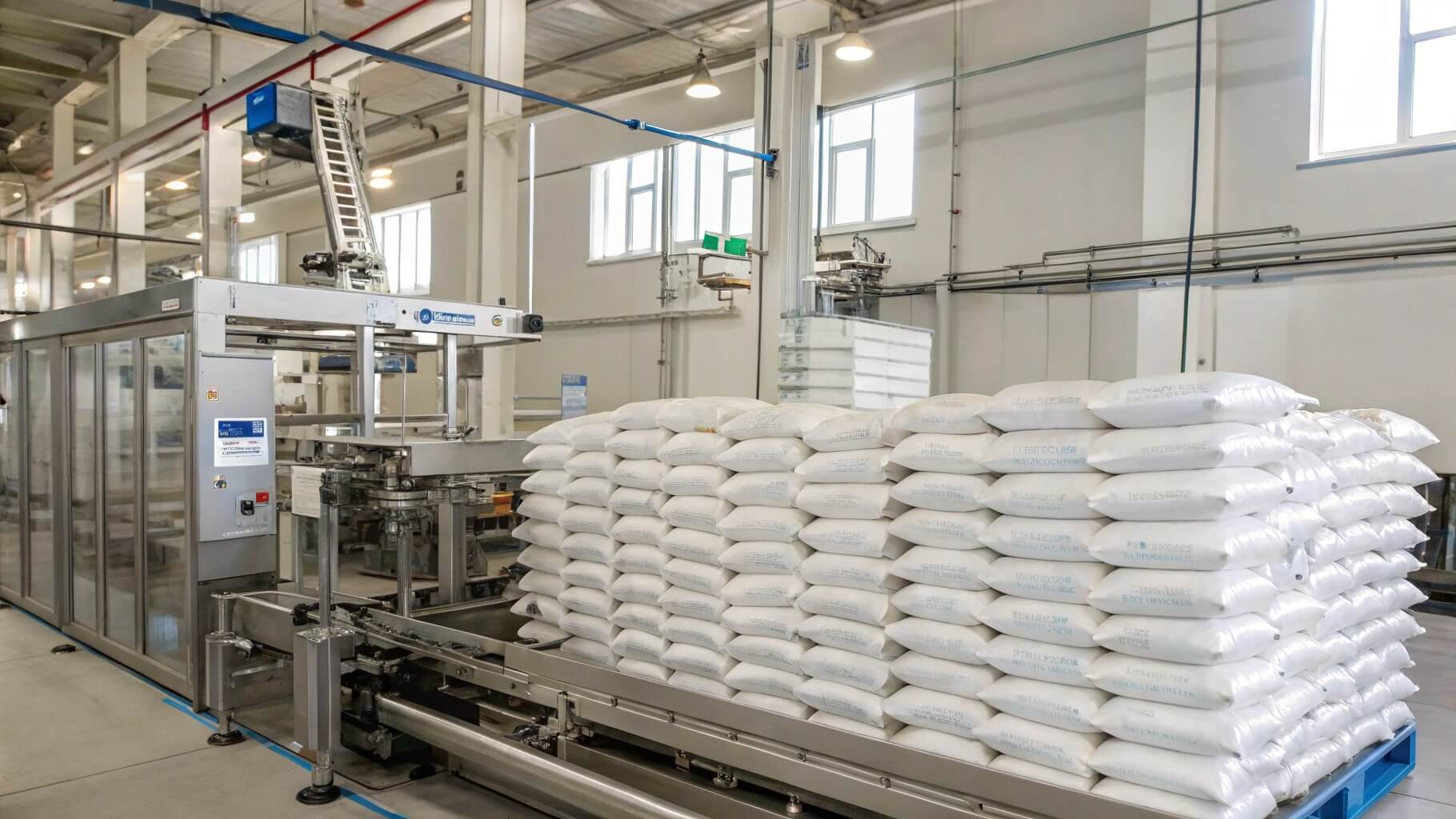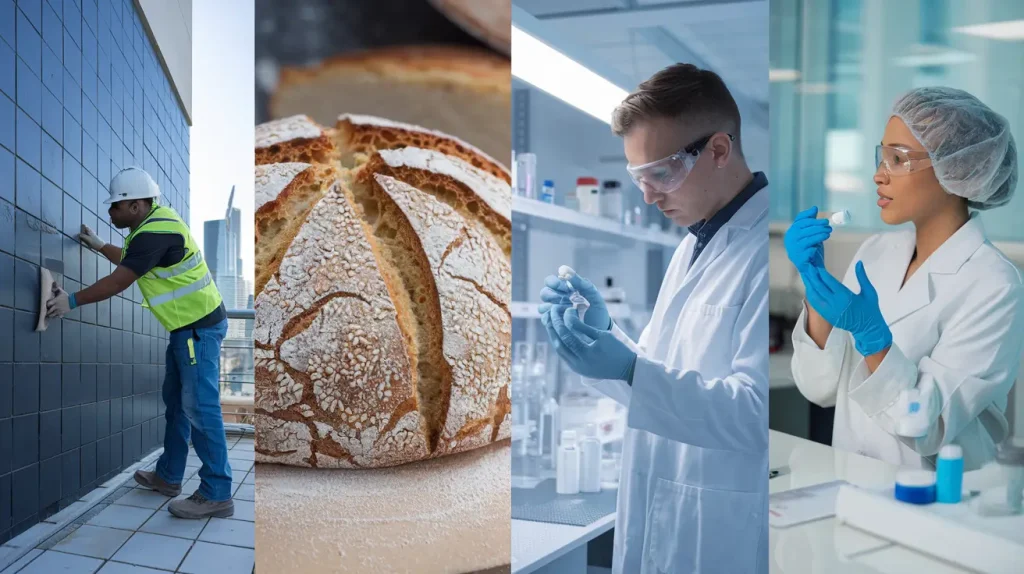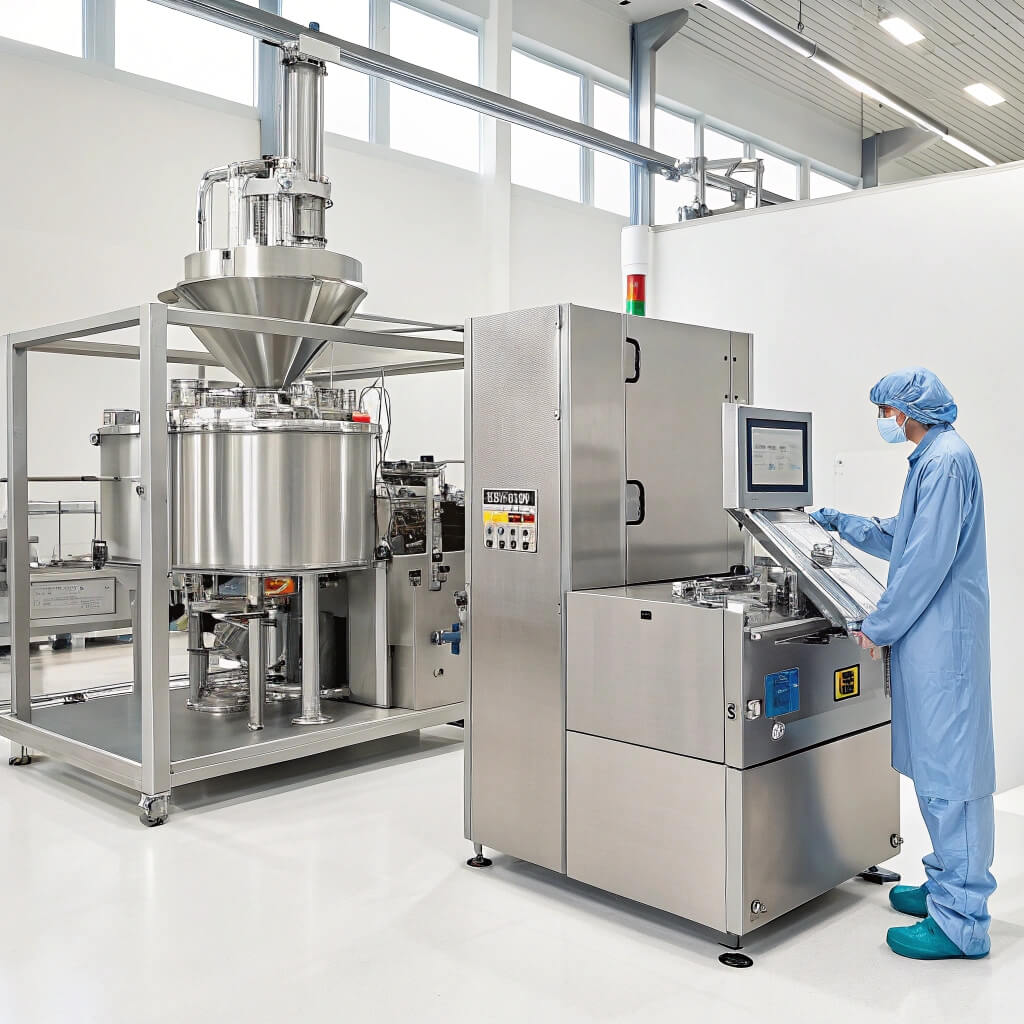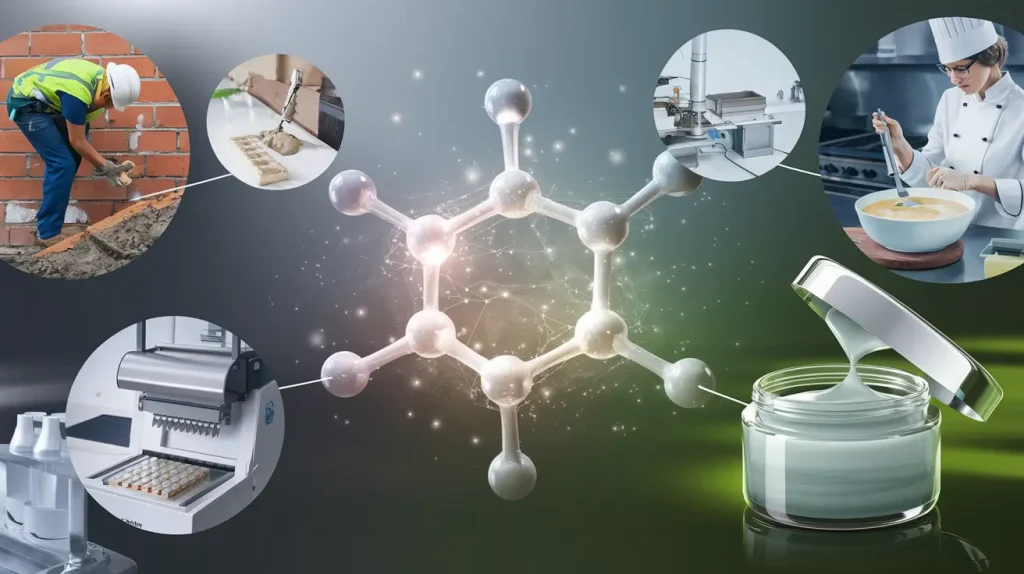Fluctuating Prix du HPMC create uncertainty for buyers in industries de la construction, pharmaceutiques et alimentaires. Raw material costs, environmental regulations, and global demand shifts all impact pricing. As 2025 approaches, what price trends should businesses anticipate, and how can they adapt to market changes?
HPMC prices in China are influenced by raw material availability, production costs, and market demand fluctuations. In 2024, prices remained volatile due to supply chain disruptions and stricter environmental policies. For 2025, analysts predict continued market adjustments, with factors like global trade dynamics and technological advancements shaping the outlook.

A data chart showing HPMC price trends in China over the past five years, highlighting fluctuations and key influencing factors.
This article explores key price drivers, past trends, and future projections for HPMC in China. We’ll also examine supply chain developments et strategies buyers can use to secure the best pricing in 2025.
What Factors Influence HPMC Prices in China?
HPMC prices in China fluctuate due to multiple market, regulatory, and economic factors. Understanding these influences helps buyers anticipate price changes and make informed procurement decisions.
The key factors affecting HPMC prices in China include raw material costs, environmental regulations, global demand, and production expenses. Supply chain disruptions, trade policies, and currency exchange rates also contribute to market volatility.
1. Raw Material Costs
The primary raw materials for HPMC production—linter de coton et oxyde de propylène—directly impact pricing.
- Cotton linter price fluctuations depend on agricultural conditions, supply levels, and global cotton market trends.
- Oxyde de propylène, a key chemical reagent, is influenced by petrochemical industry trends and oil price movements.
2. Environmental Regulations & Compliance Costs
China’s government has tightened environmental controls on chemical production, leading to:
- Des coûts de conformité plus élevés as factories upgrade to meet emission standards.
- Potential production slowdowns or shutdowns during government inspections.
- Stricter waste disposal regulations, augmentant les dépenses opérationnelles.
3. Global Demand & Export Market Conditions
China exports over 50% of its HPMC production, making global market trends a major influence.
- Construction sector growth in North America and Europe raises demand for HPMC-based adhesives and coatings.
- Pharmaceutical and food industry expansions drive demand for high-purity HPMC grades.
- Trade policies and tariffs affect pricing, with duties on chemical imports impacting Chinese exports.
4. Supply Chain Disruptions & Logistics Costs
Freight rates, port congestion, and material shortages all affect the HPMC market.
- Shipping delays from Chinese ports can create temporary shortages, pushing prices higher.
- Rising transportation costs, including fuel surcharges, increase overall HPMC pricing.
- Facteurs géopolitiques, such as trade restrictions, may impact export availability.
5. Currency Exchange Rates & Market Speculation
HPMC prices are sensitive to exchange rate fluctuations between the Chinese Yuan (CNY) and major currencies like the USD and EUR.
- UN weaker Yuan makes Chinese exports more competitive but may increase import costs for raw materials.
- UN stronger Yuan raises HPMC prices for foreign buyers but lowers production costs.
| Facteur | Impact on HPMC Prices | Current Trends (2024-2025) |
|---|---|---|
| Coûts des matières premières | Directly affect production expenses | Expected moderate increase |
| Réglementation environnementale | Raise compliance and operational costs | Stricter enforcement in 2025 |
| Global Demand & Export Conditions | Influence supply-demand balance | Steady growth in construction & pharma |
| Supply Chain & Logistics Disruptions | Can cause temporary price spikes | Freight costs fluctuating |
| Currency Exchange Rates | Affect import/export pricing | USD-CNY volatility expected |
HPMC pricing remains dynamic, driven by economic, regulatory, and supply chain conditions. In the next section, we will analyze HPMC price trends in 2024 and their impact on market stability.
How Did HPMC Prices Trend in 2024?
HPMC prices in 2024 experienced fluctuations due to supply chain disruptions, raw material cost changes, and regulatory pressures. Tracking these trends provides valuable insights for forecasting future pricing.
HPMC prices in China showed volatility in 2024, influenced by rising production costs, global economic shifts, and stricter environmental regulations. While some periods saw price stabilization, external factors led to market uncertainty.
1. Raw Material Price Trends
The cost of linter de coton et oxyde de propylène, two key HPMC ingredients, saw significant variation in 2024:
- Cotton linter prices increased by 8-12% due to reduced agricultural output.
- Propylene oxide prices fluctuated based on global oil market conditions, affecting chemical production costs.
- Supply chain constraints caused temporary shortages, further driving up costs.
2. Environmental Policy Impact
Stricter Chinese environmental regulations in 2024 led to:
- Temporary factory shutdowns, disrupting HPMC supply.
- Increased compliance costs, passed on to buyers in the form of higher prices.
- Greater investment in green production technologies, affecting production efficiency.
3. Demand Fluctuations Across Key Industries
- Construction industry demand softened in early 2024 due to economic uncertainty but recovered in Q3-Q4.
- Pharmaceutical demand remained stable, supporting consistent prices for high-purity HPMC.
- Food industry usage expanded, increasing demand for HPMC as a stabilizer in processed foods.
4. Global Trade & Logistics Influence
- Freight costs fluctuated due to port congestion and oil price swings.
- Tariff adjustments in key export markets affected pricing competitiveness.
- Trade tensions with certain regions led to shifts in supply chain strategies.
| Quarter | Average HPMC Price (USD/MT) | Key Market Influences |
|---|---|---|
| Q1 2024 | $3,200 - $3,500 | Rising raw material costs |
| Q2 2024 | $3,100 - $3,400 | Supply chain disruptions |
| Q3 2024 | $3,400 - $3,600 | Increased construction demand |
| Q4 2024 | $3,500 - $3,700 | Stabilization, strong pharma demand |
Le HPMC market in 2024 remained volatile, with fluctuations influenced by raw material costs, regulatory compliance, and industry-specific demand shifts. In the next section, we will explore price projections for 2025 and how market forces will shape the coming year.
What Is the HPMC Price Forecast for 2025?
Comme HPMC buyers and manufacturers prepare for 2025, understanding projected price movements is crucial. Will costs stabilize, or will market volatility continue?
HPMC prices in 2025 are expected to remain influenced by raw material fluctuations, environmental regulations, and global demand shifts. While certain factors may stabilize pricing, ongoing economic and supply chain uncertainties could introduce periodic price spikes.
1. Raw Material Cost Predictions
Le cost of cotton linter and propylene oxide, two essential HPMC ingredients, will remain key price determinants.
- Cotton linter prices are projected to rise 5-8% due to limited supply and higher agricultural input costs.
- Propylene oxide costs will depend on petrochemical industry trends and crude oil price movements.
- Supply chain efficiencies could help offset some raw material cost increases, stabilizing production expenses.
2. Environmental Policy & Compliance Costs
la Chine regulatory landscape will continue influencing pricing.
- Stricter emissions standards may lead to higher compliance costs for manufacturers.
- Increased adoption of green production technologies could initially drive up costs before long-term efficiency gains are realized.
- Government incentives for cleaner production might help offset regulatory cost burdens.
3. Industry-Specific Demand Trends
- The construction sector is expected to recover modestly, increasing demand for HPMC-based adhesives and coatings.
- Pharmaceutical demand will remain steady, supporting stable pricing for high-purity HPMC grades.
- Food and cosmetics industry usage is likely to expand, driving demand for specialty HPMC formulations.
4. Global Trade & Market Uncertainties
- Freight and logistics costs are projected to stabilize, barring major geopolitical disruptions.
- Tariff adjustments in major export markets could affect Chinese HPMC price competitiveness.
- Currency fluctuations may impact international pricing, with CNY-USD exchange rates influencing export costs.
HPMC Price Forecast (2025)
| Quarter | Projected Price Range (USD/MT) | Key Influences |
|---|---|---|
| Q1 2025 | $3,400 - $3,700 | Rising raw material costs |
| Q2 2025 | $3,500 - $3,800 | Regulatory compliance expenses |
| Q3 2025 | $3,600 - $3,900 | Construction and pharma demand |
| Q4 2025 | $3,700 - $4,000 | Supply chain stabilization |
Alors que HPMC prices may rise moderately in 2025, proactive buyers can mitigate risks through strategic sourcing and long-term supplier agreements. Dans la section suivante, nous explorerons how China's HPMC supply chain is expected to evolve and its impact on pricing.
How Will China's HPMC Supply Chain Evolve?
la Chine Chaîne d'approvisionnement HPMC is undergoing major transformations due to regulatory changes, technological advancements, and shifts in global trade policies. How will these developments impact production, distribution, and pricing in 2025?
China’s HPMC supply chain is expected to become more efficient, sustainable, and globally integrated. Manufacturers are investing in advanced production technologies, raw material security, and supply chain diversification to enhance stability and competitiveness.
1. Adoption of Advanced Manufacturing Technologies
To improve efficiency and compliance, HPMC manufacturers are implementing:
- Lignes de production automatisées – Reducing labor costs and increasing output consistency.
- Contrôle qualité piloté par l'IA – Ensuring tighter batch consistency and purity levels.
- Eco-friendly chemical processing – Minimizing waste and lowering environmental impact.
2. Strengthening Domestic Raw Material Supply
Avec rising global commodity prices, securing raw material supply has become a priority:
- Local sourcing agreements – Reducing dependence on imported raw materials.
- Government incentives for cotton linter production – Supporting price stability.
- Vertical integration strategies – Large manufacturers are investing in their own chemical processing facilities.
3. Diversification of Export Markets
la Chine HPMC exports have traditionally focused on North America, Europe, and Southeast Asia. However, manufacturers are now expanding into:
- Latin America and Africa – New construction and pharmaceutical market opportunities.
- Middle Eastern countries – Increasing demand for oilfield and industrial applications.
- India and South Asia – Rising demand despite local competition.
4. Supply Chain Resilience & Risk Mitigation
To avoid future supply disruptionsLes fabricants chinois sont :
- Building regional warehouses in major export destinations.
- Investing in multi-modal logistics solutions for flexible shipping options.
- Reducing dependency on single suppliers by sourcing from multiple regions.
| Supply Chain Evolution | Impact on HPMC Pricing | Strategic Benefits |
|---|---|---|
| Procédés de fabrication avancés | Higher initial costs, long-term efficiency gains | Improved product quality & output |
| Strengthening Domestic Raw Material Supply | Price stability, reduced import costs | Lower production risk |
| Diversified Export Markets | More competitive pricing across regions | Reduced reliance on specific buyers |
| Supply Chain Resilience Measures | Fewer disruptions, predictable lead times | More stable HPMC supply |
la Chine HPMC supply chain is evolving to meet global demand while reducing risks associated with raw material shortages and logistics disruptions. In the next section, we will discuss how buyers can secure the best pricing strategies for 2025.
What Strategies Can Buyers Use to Get the Best HPMC Prices?
HPMC price fluctuations can significantly impact procurement budgets. Buyers must adopt smart sourcing strategies to secure the best pricing while ensuring quality and supply stability.
To get the best HPMC prices, buyers should focus on long-term contracts, diversified supplier sourcing, bulk purchasing, and supply chain risk management. Understanding market cycles and leveraging supplier relationships also play a crucial role.
1. Establish Long-Term Supplier Contracts
- Lock in stable pricing by negotiating fixed-term agreements with reliable manufacturers.
- Avoid short-term price spikes caused by market volatility.
- Ensure priority supply during high-demand periods.
2. Diversify Supplier Base
- Compare multiple suppliers to identify the best pricing and terms.
- Work with both manufacturers and trading companies to access varied price points.
- Avoid over-reliance on a single supplier, reducing risk in case of shortages.
3. Purchase in Bulk to Leverage Cost Savings
- Higher-volume orders often qualify for discounted rates.
- Lower per-unit costs by consolidating shipments.
- Minimize logistics expenses by optimizing order sizes.
4. Monitor Market Trends & Purchase at Optimal Times
- Track HPMC raw material costs (e.g., cotton linter, propylene oxide) to predict price movements.
- Buy during off-peak seasons when demand is lower to secure better deals.
- Stay updated on government regulations that may impact pricing.
5. Optimize Logistics & Reduce Import Costs
- Negotiate better freight rates by consolidating shipments with other bulk materials.
- Choose suppliers with regional warehouses to shorten delivery timelines.
- Work with experienced import agents to streamline customs clearance and avoid hidden fees.
6. Leverage Supplier Relationships for Better Pricing
- Build long-term relationships with trusted manufacturers to access preferred pricing tiers.
- Engage in direct negotiations instead of relying solely on B2B marketplaces.
- Request value-added services like free samples, technical support, or flexible payment terms.
| Strategy | Benefits | Implementation Tips |
|---|---|---|
| Long-Term Supplier Contracts | Stable pricing, guaranteed supply | Lock in rates with annual agreements |
| Supplier Diversification | Reduced risk, better price comparisons | Work with multiple HPMC providers |
| Bulk Purchasing | Lower unit costs, reduced logistics fees | Consolidate large orders where possible |
| Market Monitoring | Buy at best times, avoid overpaying | Track raw material trends regularly |
| Logistics Optimization | Faster deliveries, cost savings | Utiliser regional warehouses & optimized freight |
| Strong Supplier Relationships | Better deals, value-added benefits | Maintenir consistent & direct communication |
Par adopting strategic sourcing practices, monitoring price trends, and negotiating favorable contracts, buyers can effectively manage HPMC procurement costs in 2025. In the next section, we will summarize key takeaways and outline expectations for HPMC pricing in the near future.
Conclusion: What Does the Future Hold for HPMC Pricing in China?
HPMC prices in China will continue to be shaped by raw material costs, environmental regulations, global demand shifts, and supply chain evolution. While moderate price increases are expected in 2025, strategic buyers can mitigate risks through long-term contracts, supplier diversification, and market timing.
Le HPMC industry in China remains a dominant global supplier, supported by technological advancements, cost-efficient production, and expanding export markets. Cependant, regulatory compliance and rising production costs will influence pricing trends. Manufacturers investing in green technologies, automation, and supply chain resilience gagneront un avantage concurrentiel.
For buyers, the key to securing the best pricing in 2025 lies in:
- Proactively monitoring price drivers such as raw material costs and trade policies.
- Building strong supplier relationships to access competitive pricing and priority supply.
- Optimizing logistics and bulk purchasing strategies to reduce procurement costs.
To stay ahead in the Marché du HPMC, industry players must adapt to economic and regulatory changes while leveraging strategic sourcing practices. If you’re looking for expert insights or supplier recommendations, reach out to us for customized procurement strategies and pricing forecasts.
FAQ
Quelle est la taille du marché du HPMC ?
Le marché mondial du HPMC is valued at several billion USD, with demand driven by industries like construction, produits pharmaceutiques, alimentation et soins personnels. China remains the largest producer and exporter, supplying over 50% of global demand. Market growth is expected to continue, fueled by increasing applications in sustainable construction materials and pharmaceutical formulations.
What is the price of HPMC polymer?
Le price of HPMC polymer varies based on grade, purity, and bulk order quantity.
- HPMC de qualité construction ranges from $3,200 to $3,800 per metric ton.
- HPMC de qualité pharmaceutique et alimentaire can cost between $4,000 and $5,500 per metric ton, depending on viscosity and regulatory compliance.
Prices fluctuate due to raw material costs, production expenses, and global demand trends.
Qui est le fabricant de HPMC ?
HPMC is manufactured by several leading chemical companies, principalement dans China, Germany, and Japan.
- Chine houses the largest production base, with manufacturers specializing in cost-effective, high-volume production.
- L'Allemagne et le Japon se concentrer sur high-purity, pharmaceutical-grade HPMC.
- Major suppliers offer USP, EP, JP-certified HPMC for regulated industries like pharmaceuticals and food.
What is the price of HPMC liquid?
Liquid HPMC is less common than its powdered counterpart and is typically used in applications spécialisées.
- Pricing varies based on viscosity and formulation but generally ranges between $4,500 and $6,000 per metric ton for high-purity liquid grades.
- Prices fluctuate depending on concentration, application, and supplier specifications.




